
BURIED TREASURE IN OHIO
Copyright © 2024 by Mark Strecker.
Greenback from the Civil War
Wikimedia Commons
Wikimedia Commons
This illustration of a fortune teller was created by Boardman Robinson. March 3, 1923.
Library of Congress
Library of Congress
James A. Garfield.
G.F. Gilman, photographer. c. 1881.
Library of Congress
G.F. Gilman, photographer. c. 1881.
Library of Congress
Charles Guiteau.
Charles Milton Bell, photographer. 1882.
Library of Congress
Charles Milton Bell, photographer. 1882.
Library of Congress
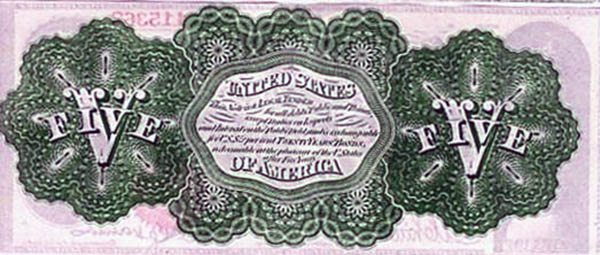
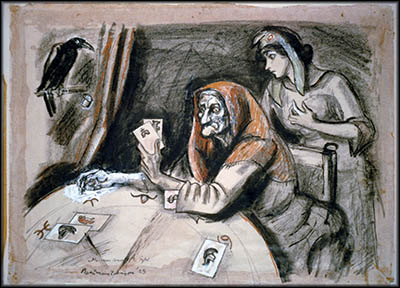
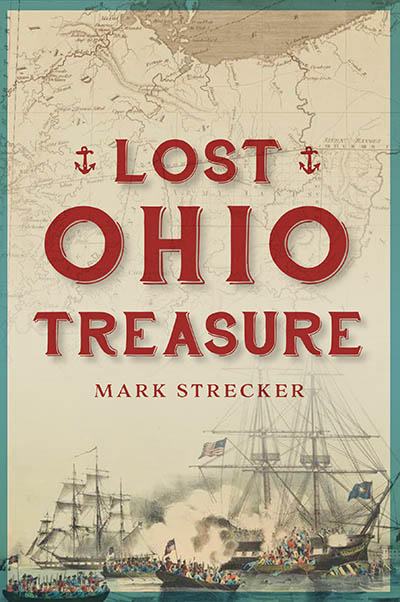
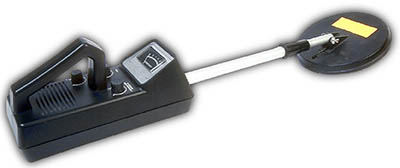
Metal Detector
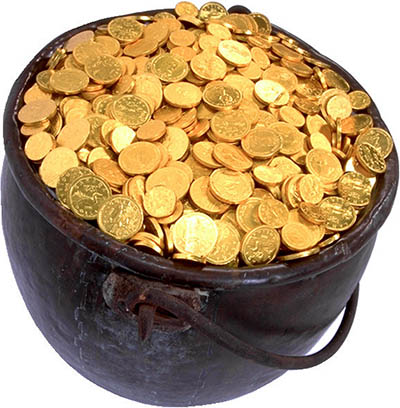
Pot of Gold
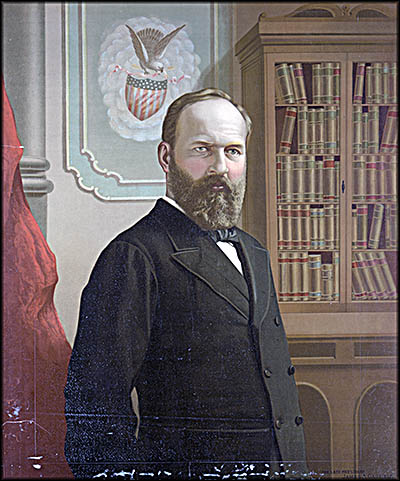
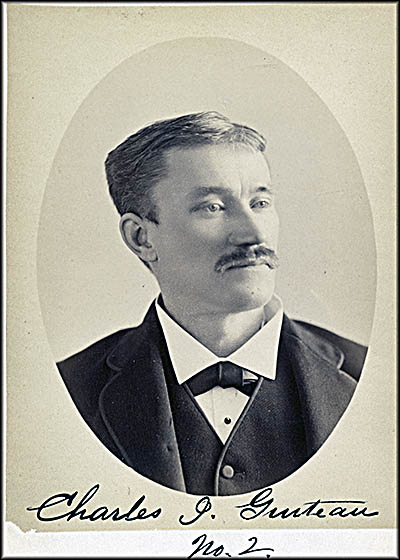
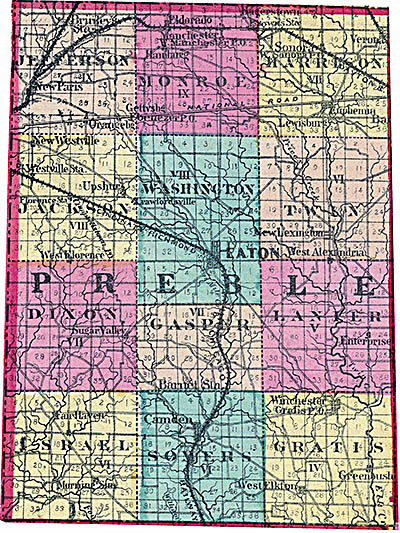
Preble County Map.
Dave Rumsey Collection.
Dave Rumsey Collection.
You can read more about buried treasure in Ohio in Lost Ohio Treasure.
On February 20, 1889, gold, silver and greenbacks valued at $4,288 and weighing fifty-two pounds were dug up by Eli Groomes in Winchester. It’d been buried by Groomes’ father, who died before telling anyone of its location. On July 19, 1889, workmen tearing down the William Tell Tavern in Cincinnati unearthed a valise that had belonged to a Civil War solider. In it they found $75 in greenbacks plus some coins. In mid-April, 1916, Homer Hodges of Lancaster dug up a tin can in his garden containing $500 in gold.
Cincinnati’s Commercial Gazette reported that on December 3, 1889, the dogs of the two brothers who lived in the village of Little Sandusky in Wyandot County chased “a rabbit into a hole among the roots of an old stump.” The boys used an ax and spade to reach their prey. Instead of a rabbit, they found “two peculiar kettles filled with gold and silver coins.”
It was believed the cache once belonged to the Tucker brothers, who in the 1840s made their fortune from bounties gained by catching escaped slaves. The Tuckers repeatedly captured runaway slaves taking refuge in the house of a former slave, Jim, who was part of the Underground Railroad. This outraged the locals, so they ran the Tuckers out of the village, forcing them to leave their blood money behind.
In late April 1859, Corbell Ware of Preble County discovered a freshly dug hole near a fence by a large rock. Finding nothing of interest in it, he filled it in. A day later he found a deeper hole dug in the same location, and this time he saw that an iron box had been dug out. About eighteen years earlier, robbers took from the Twin Township Treasury between $1,200 and $1,500 worth of gold and silver, and Ware suspected this was what had been dug up.
Cincinnati’s Commercial Gazette reported that on December 3, 1889, the dogs of the two brothers who lived in the village of Little Sandusky in Wyandot County chased “a rabbit into a hole among the roots of an old stump.” The boys used an ax and spade to reach their prey. Instead of a rabbit, they found “two peculiar kettles filled with gold and silver coins.”
It was believed the cache once belonged to the Tucker brothers, who in the 1840s made their fortune from bounties gained by catching escaped slaves. The Tuckers repeatedly captured runaway slaves taking refuge in the house of a former slave, Jim, who was part of the Underground Railroad. This outraged the locals, so they ran the Tuckers out of the village, forcing them to leave their blood money behind.
In late April 1859, Corbell Ware of Preble County discovered a freshly dug hole near a fence by a large rock. Finding nothing of interest in it, he filled it in. A day later he found a deeper hole dug in the same location, and this time he saw that an iron box had been dug out. About eighteen years earlier, robbers took from the Twin Township Treasury between $1,200 and $1,500 worth of gold and silver, and Ware suspected this was what had been dug up.
Most treasure stories never pan out, especially ones with clear markers. Take the story of the inscribed limestone found near the village of Collinwood. Unearthed by a farmer, on it someone had engraved: “Beneath this stone is buried several sacks of gold. By virtue of authority…” and the rest was unreadable. Experts who examined the stone concluded the inscription was counterfeit. This is no surprise. No one sticks a stone in the ground saying there is gold buried below because someone would inevitably dig it up.
The farm’s owner, Mrs. McMicken of Oxford, longed believed gold worth $80 was there, prompting her to forbid her tenant, Mr. McDonald, from using the field in which it was supposedly buried. After several dreams telling her it was there definitely there, she hired someone to start digging. Nothing was found.
Sometimes people show up out of the blue certain they know where buried treasure is. In December 1889, aa building on the corner of Cincinnati’s East Sixth and Broadway Streets became the focus of a brief treasure hunt. Originally a Methodist church, it became a Jewish synagogue, then a tenement house in which lived mixed races and sexes.
The treasure hunting frenzy began when Mrs. Heath, a former resident of Cincinnati who lived in Washington, D.C., stopped by claiming that in 1881 she’d buried $3,095 worth of gold and silver in the building’s courtyard. She employed two men to dig for it. Four holes going eight feet deep yielded nothing, so she went home empty-handed, insisting someone must’ve stolen it. It’s more likely that a buried treasure story lured her to the spot and she told the story of her burying it herself so she could claim the prize as her own if it were found.
The farm’s owner, Mrs. McMicken of Oxford, longed believed gold worth $80 was there, prompting her to forbid her tenant, Mr. McDonald, from using the field in which it was supposedly buried. After several dreams telling her it was there definitely there, she hired someone to start digging. Nothing was found.
Sometimes people show up out of the blue certain they know where buried treasure is. In December 1889, aa building on the corner of Cincinnati’s East Sixth and Broadway Streets became the focus of a brief treasure hunt. Originally a Methodist church, it became a Jewish synagogue, then a tenement house in which lived mixed races and sexes.
The treasure hunting frenzy began when Mrs. Heath, a former resident of Cincinnati who lived in Washington, D.C., stopped by claiming that in 1881 she’d buried $3,095 worth of gold and silver in the building’s courtyard. She employed two men to dig for it. Four holes going eight feet deep yielded nothing, so she went home empty-handed, insisting someone must’ve stolen it. It’s more likely that a buried treasure story lured her to the spot and she told the story of her burying it herself so she could claim the prize as her own if it were found.
Simpson Gepford travelled all the way from Vandalia, Illinois, to Stark County to find buried treasure. Originally from the county, he’d moved to Illinois many years earlier. He aimed to find buried treasure on land once owned by John Cruson from Pennsylvania, a man who’d settled on a parcel of land between Sippo and Meyers Lakes (the Massillon-Canton area). Cruson disappeared around 1810, his fate unknown. He’d supposedly left a fortune in gold buried on his property. Gepford’s father was a relation of Cruson, and Gepford often stayed in the house from which Cruson disappeared. At night a noise that sounded like someone walking often woke him up. His daughter, who also lodged there for a time, had the same experience.
According to the August 3, 1887, edition of the Massillon Daily Independent, Gepford was told “three different times … by fortune tellers that there was a buried chest in Ohio, and that he was destined to get it.” He ignored the first two fortune tellers, but decided that third one knew too many details about the buried treasure to be ignored. Using borrowed money, he headed to the old farm to dig up his fortune. Gaining permission to stay at the Cruson house, he looked for weeks but found nothing. He vowed to return one day and search again.
That Gepford was duped by fortune tellers wasn’t all that usual. Searches for buried treasure often involved consultations with those purporting to have mystical powers or who used supernatural tools such as divining rods, seer stones, and mirrors. These charlatans usually employed a very mundane means for their cons: they hired a confederate who learned as much about the mark as possible before the fortune teller made contact. With the knowledge gained from the confederate, the fortune teller appeared to know things that could only be divined using paranormal means.
According to the August 3, 1887, edition of the Massillon Daily Independent, Gepford was told “three different times … by fortune tellers that there was a buried chest in Ohio, and that he was destined to get it.” He ignored the first two fortune tellers, but decided that third one knew too many details about the buried treasure to be ignored. Using borrowed money, he headed to the old farm to dig up his fortune. Gaining permission to stay at the Cruson house, he looked for weeks but found nothing. He vowed to return one day and search again.
That Gepford was duped by fortune tellers wasn’t all that usual. Searches for buried treasure often involved consultations with those purporting to have mystical powers or who used supernatural tools such as divining rods, seer stones, and mirrors. These charlatans usually employed a very mundane means for their cons: they hired a confederate who learned as much about the mark as possible before the fortune teller made contact. With the knowledge gained from the confederate, the fortune teller appeared to know things that could only be divined using paranormal means.
One successful confidence trickster of this type, A. Schilling, claimed he was a necromancer. A German immigrant who lived at 17 Betts Street in Cincinnati, he spoke no English, so he catered to the city’s large German-speaking community. For many years he earned what little money he possessed by curing minor aliments using his “necromantic powers.” One day he was asked to attend to two children dying from ailments that doctors wrote off as fatal. He claimed that witchcraft was the culprit, and he “cured” the children by making effigies of them, which he then burned.
Taking credit for their miraculous recovery, his business did so well that he was able to move into a two story house at 395 Court Street. On his door hung a sign that read, “Doctor A. Schilling.” He often referred to himself as the “Wonderful Witch-Doctor Schilling,” an interesting appellation considering Germany wasn’t known for producing this sort of sorcerer. By 1876 he’d gotten into the detecting of buried treasure business. According to the October 29, 1876, edition of the Cincinnati Enquirer, he did so by “means of hobgoblin dances, wild incantations and mathematic sorcery”—whatever those were. The failure of the magic words “open sesame” to extract the hidden gold in Fulton County didn’t deter him. He claimed he’d successfully found many buried treasures, usually by “calling the dead from the grave” to get the information directly from the source.
By the twentieth century, charlatans like Schilling were being replaced by dubious “scientific” devices designed to detect lost treasure, which were especially popular during the Great Depression. While most if not all of these apparatuses were useless and often used by con artists, in 1931 a machine that really did find buried treasure came onto the market: the metal detector.
Alexander Graham Bell invented it in 1881 to find a bullet lodged in President James Garfield’s abdomen put there by a gun fired by Charles Guiteau. Bell’s metal detector failed not because it didn’t work but rather that no one thought to move Garfield off his bed, which had metal springs that skewed the detector’s readings. Garfield died of sepsis caused by doctors sticking their dirty fingers into the bullet wound.
Taking credit for their miraculous recovery, his business did so well that he was able to move into a two story house at 395 Court Street. On his door hung a sign that read, “Doctor A. Schilling.” He often referred to himself as the “Wonderful Witch-Doctor Schilling,” an interesting appellation considering Germany wasn’t known for producing this sort of sorcerer. By 1876 he’d gotten into the detecting of buried treasure business. According to the October 29, 1876, edition of the Cincinnati Enquirer, he did so by “means of hobgoblin dances, wild incantations and mathematic sorcery”—whatever those were. The failure of the magic words “open sesame” to extract the hidden gold in Fulton County didn’t deter him. He claimed he’d successfully found many buried treasures, usually by “calling the dead from the grave” to get the information directly from the source.
By the twentieth century, charlatans like Schilling were being replaced by dubious “scientific” devices designed to detect lost treasure, which were especially popular during the Great Depression. While most if not all of these apparatuses were useless and often used by con artists, in 1931 a machine that really did find buried treasure came onto the market: the metal detector.
Alexander Graham Bell invented it in 1881 to find a bullet lodged in President James Garfield’s abdomen put there by a gun fired by Charles Guiteau. Bell’s metal detector failed not because it didn’t work but rather that no one thought to move Garfield off his bed, which had metal springs that skewed the detector’s readings. Garfield died of sepsis caused by doctors sticking their dirty fingers into the bullet wound.
Metal detecting can become something of an obsession for people. In the 1970s, Richard Ellis of Muskingham County gave up golf in favor of spending time with his trusty metal detector. He got his start in the 1972 when a magazine about treasure hunting caught his eye. He read it cover to cover and was surprised by the ads for metal detectors, a device he didn’t know existed. He became so obsessed that he felt withdrawal if he didn’t go searching for too long a period.
When he started out, he had three goals: find a diamond ring (by February 1977 he’d found nine), gold coins and buried treasure. To achieve the latter two goals, he spent a lot of time doing research reading old books and looking at maps to unearth the best spots to find them. Over a five year period he found objects that included a trumpet mouthpiece, a cannon ball, a button dating to 1920, and an 1864 Indian head penny. His wife borrowed his detector and with it unearthed a 1909 “S” penny worth $25 at the time. Today it would fetch anywhere from $115 to $465 depending on its condition.
My book Lost Ohio Treasure takes a deeper dive in reports of real treasure being found as well as the confidence tricksters who profited from its lure. I also look at nearly all the lost treasure stories of Ohio I could find to see if the historical events they’re connected to really happened. If so, I then take a deep dive into the historical records to determine if a treasure might really exist or not. Lost treasure stories in the book include John Dillinger’s buried loot near Lima, the lost vault of Cincinnati bootlegger George Remus, and a fortune in gold and silver buried by the French during the French and Indian War.🕜
When he started out, he had three goals: find a diamond ring (by February 1977 he’d found nine), gold coins and buried treasure. To achieve the latter two goals, he spent a lot of time doing research reading old books and looking at maps to unearth the best spots to find them. Over a five year period he found objects that included a trumpet mouthpiece, a cannon ball, a button dating to 1920, and an 1864 Indian head penny. His wife borrowed his detector and with it unearthed a 1909 “S” penny worth $25 at the time. Today it would fetch anywhere from $115 to $465 depending on its condition.
My book Lost Ohio Treasure takes a deeper dive in reports of real treasure being found as well as the confidence tricksters who profited from its lure. I also look at nearly all the lost treasure stories of Ohio I could find to see if the historical events they’re connected to really happened. If so, I then take a deep dive into the historical records to determine if a treasure might really exist or not. Lost treasure stories in the book include John Dillinger’s buried loot near Lima, the lost vault of Cincinnati bootlegger George Remus, and a fortune in gold and silver buried by the French during the French and Indian War.🕜
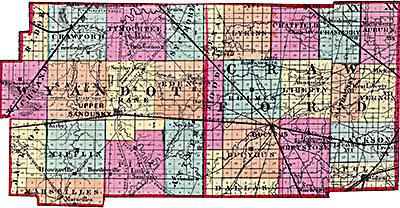
Wyandot County Map.
Dave Rumsey Collection.
Dave Rumsey Collection.